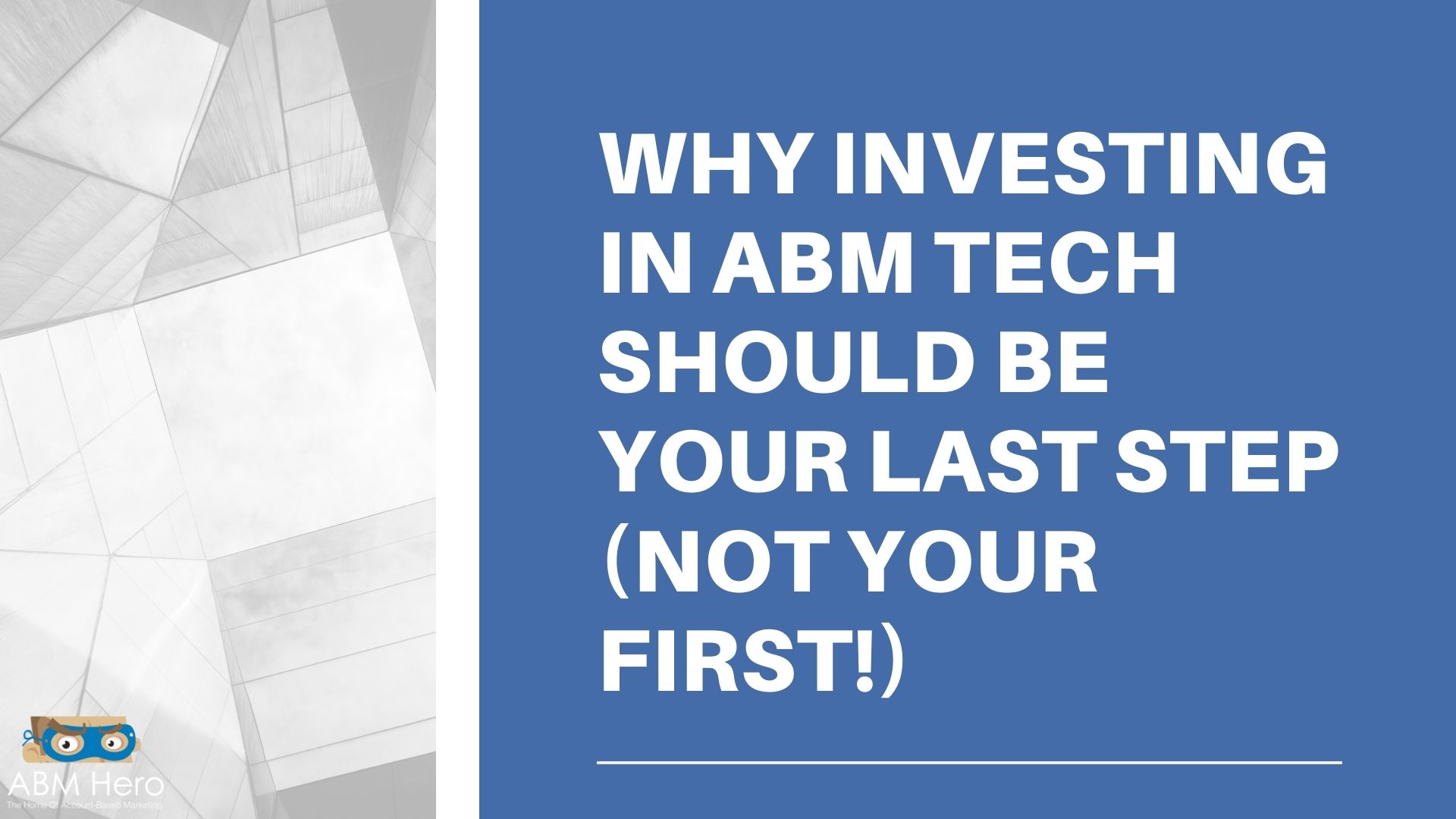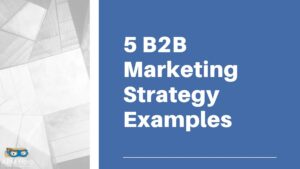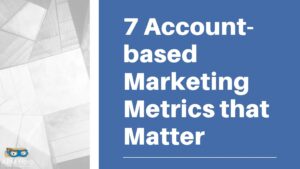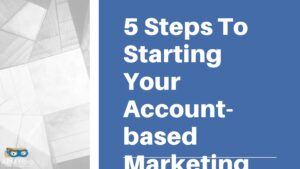On LinkedIn, Hillary Carpio (Director of Account-Based Marketing at Snowflake) mentioned that she often hears about marketing teams investing in or exploring ABM techs like Demandbase, Terminus, 6sense, and Madison Logic as the first step in their ABM journey. They’re not thinking about….
- How they want sales and marketing to work together.
- How they want to go to market in a relevant, account-specific way.
- The account-based enablement that will be needed to drive stage progression.
- How they need to change sales and marketing motions, the social/email/live interactions they are having with key accounts, and the experiences they are delivering.
- How they want to leverage content, messaging, social and demand gen to change the narrative, challenge the status quo, create a buying consensus, and drive wins and account expansions with the 20% of accounts that can deliver 80% of today’s and tomorrow’s revenue growth.
- How they should be tailoring ABM to their business, their team, and their future and existing customers vs. replicating someone else’s ABM program.
The focus on ABM technology as the first step vs. the last step is one of the big reasons why ITSMA and Tech Target report that 66% of ABM programs underperform.
This tech focus makes ABM all about campaigns and touches vs. creating differentiated, relevant moments, interactions and experiences.
It becomes a bunch of tactics (retargeted ads, emails, Outreach campaigns, etc.) to get accounts into the pipeline. But it should not be about getting accounts into the pipeline.
The ABM organizations that focus on pipeline KPIs and marketing sourced revenue are only doing account-based lead gen, account-based advertising, account-based awareness, and account-based demand gen.
ABM should be about how leadership, sales, marketing, revenue, sales enablement, customer success, and product teams together will hit the numbers the business needs to get to the next level.
It should be a strategy on how the teams will fix business challenges that are tied to the fundamentals of revenue: win rates, deal sizes, sales velocity, stage progression, sales cycle time, retention, ARR, margin growth, and expansion.
Here are 4 examples that show the impact of focusing on ABM tech as the first step….
1.A channel sales tech firm continually lost to Salesforce and major players
I recently asked the CMO of the channel sales technology company about her ABM program. She rattled off the technologies they were using….6sense, Terminus, Xant, Outreach, etc.
She mentioned how they were a case study for 6sense. But, they were just running targeted demand gen programs with in-market accounts.
While they were getting traction, they were challenged to win multi-year contracts with accounts that would need a deal size of more than $75K per year.
Accounts that large would consistently move forward with what they “saw” as a safe bet which was Salesforce or another prominent player in the market.
They were not teaching differentiation with content and messaging that shows the impact of competitor-specific gaps on the target accounts.
They weren’t changing the sales and marketing conversation. They weren’t changing the interactions that sales and marketing had with larger accounts that would provide the strongest revenue growth. They treated all accounts the same. No changes were made. They were doing “marketing as usual,” just more targeted using ABM technologies.
2. A cybersecurity firm only engaged in low-value deals with its ABM program
In talking to the CMO of the cybersecurity and managed detection response firm targeting organizations using Microsoft Defender 365, we learned that they were only getting $65K accounts into the pipeline vs. $125K to $250K. The problem is… they were simply doing targeted demand gen as they were only engaging in a personalized 1:few and 1:many approach. Their campaigns spoke at targeted accounts and “personas” and focused on general assumptions and pain points.
They made their ABM program campaign-based vs. focusing on the interactions that sales and marketing teams needed to have with accounts that can deliver the greatest revenue growth. Sales and marketing teams were pushing out content and messaging and hoping that something sticks.
They were still telling “everybody’s” story. As Matthew Dixon and Brent Adamson mention in their book, “The Challenger Sale,” in most cases, buyer unresponsiveness is not because you failed to make a logical argument. It’s because you failed to make an emotional connection.
It’s not that buyers didn’t believe your story. It’s because they didn’t see it as “their” story.
So, in other words, they were doing marketing as usual, but now they were using intent data and ABM technologies to take a more targeted “spray and pray” approach.
They weren’t speaking to and with the human buyers on every channel within target accounts that they wanted to win, protect and expand. They didn’t go directly to key decision-makers and influencers with insights specific to their gaps, impacts, and content that speaks to them specifically.
They didn’t focus on every single interaction and touchpoint that GTM teams should have with the human buyers and how they are relevant at the industry, company, rank, division, operational, financial, personal, and customer levels.
3. A fintech firm was building a pipeline that goes nowhere
In talking to an RVP of Sales at a fintech firm serving mid-market banks, as well as national institutions like Wells Fargo, I learned that the company was focused on scaling ABM to build a stronger pipeline.
Their focus was on increasing the number of appointments that sales were having. But their stage 1 to close rate was 5%. And after losing most of their opportunities right from the beginning, they lost more than half the deals that progressed to stage 3.
The issue was that they were doing targeted demand gen — not ABM, which should be about getting key accounts to revenue. They relied on technology to put out content and messaging to targeted accounts, but they didn’t change sales motions, sales processes, and conversations so they could improve their win rates.
They didn’t think about how they should be changing the prospect experience. The more they focused on scaling ABM with technology, the further away they got from having the right interactions and delivering the right experiences. The more they tried to scale ABM, the more ABM became account-based advertising, account-based lead gen, targeted demand gen, and marketing as usual.
4. Conversational AI firm is challenged with accounts going dark after-sales engagement
After the VP of Product Marketing for a large conversation AI company with deal sizes of $500K+ was on our ABM Done Right Podcast, we dug deeper into his ABM program.
I learned that the team was challenged with stage progression after-sales engagement. Their Demandbase campaigns created demand and built a pipeline. But there was no follow-through.
There was no account-based enablement and strategy to ensure wins. Instead of a handshake, there was a hand-off, which meant that ABM again was being treated as a targeted demand gen function.
When your revenue is on the line, sales and GTM teams need account insights so an alignment can be created with the company, with different teams, and with the different human buyers and influencers.
They need relevant messages, content, stories, insights, and skills to enable sellers in the flow of work for specific accounts—when they need it.
We need to build situational fluency and influence the selling conversation and internal conversations that need to happen. Click here to learn about the account-based enablement that GTM teams need to win with tier 1 accounts.
What you should focus on BEFORE investing in ABM tech like Demandbase, Terminus, 6sense, and others…
1. A defined roadmap for how sales and marketing will work together to drive accounts to revenue
Many ABM organizations are not setting up their ABM programs in a way where collaboration is required.
Marketing is responsible for campaigns focused on up to 500 industry accounts and on account clusters where prospects display similar intent signals, have similar characteristics, and are in a similar buying stage.
Sales are responsible for getting engaged campaign prospects to the close and for the one-to-one communications with target accounts. But sales teams are often left to their own devices. Sales and marketing are separately speaking at accounts in hopes of driving leads, appointments, and engagement. But ABM is not about campaigns, as I’ve mentioned throughout this article.
By now, you see that ABM is not a piece of marketing technology that demand gen teams execute on. When ABM is treated as a campaign, it becomes an expense – and expenses get cut. ABM is about having the right interactions and delivering the right experiences that are needed to get accounts to revenue and existing accounts to greater revenue growth.
2. The change management that will need to take place before you can execute ABM strategies
Most companies think they can retrofit their lead process, their lead technology, and their lead reporting in and around what already exists for their new ABM reporting and approach.
They think they don’t necessarily have to “burn things to the ground” to adopt an ABM strategy. But, this only works if you want a lead engine and ABM should not be about driving leads and a stronger pipeline.
If you want a revenue engine, then we need to change content and messaging as most do not support sales or ABM. We need to change sales and marketing motions, processes, and the interactions they’re having with future and existing customers across all channels.
You need to uncover where gaps exist in your current GTM efforts, what needs to change, why it needs to change, and how. Without change management, you will not see the maximum impact from your ABM program because the company as a whole will operate as usual, but now with a targeted list.
3. Defining your ICP, account segmentation, and the ABM approach to take
Most sales and marketing teams are treating all accounts the same – there is no tiering, no segmentation, and no differentiation in approaches. Only ⅓ of ABM programs have a balance between 1:1, 1:few, and 1:many.
This means two-thirds of ABM organizations are treating every opportunity the same. They are not thinking about each account as an investment that carries a different weight and risk.
4. Defining the “joint” wins ABM strategies will tackle
In addition to aligning on targets, GTM teams need to align on the KPIs that they first want to impact. In many cases, ABM programs are built too large as we have a desire to scale.
But if we’re going to focus on the complete buying journey and customer lifecycle, then we need to apply for our ABM programs against different KPIs that we want to impact first.
- Do you have accounts that are not progressing through the buyer’s journey? It’s important to figure out why accounts are not progressing and execute ABM strategies to improve that KPI.
- Do you have accounts that are taking too long to close? One company we talked to was in conversations with Mastercard, Walmart, and PayPal for 14 months and is still not close to a deal being signed. This is where they should be applying ABM. It should focus on accelerating stuck accounts to revenue.
- Do you want to go upmarket and increase your deal? Then, this is where ABM should be applied first.
Instead of focusing on the pipeline, start thinking about the KPIs that tie to revenue growth: sales velocity, win rates, stage progression time, sales cycle time, ARR, retention, and CLV.
5. ABM strategies for the complete buyer’s journey as ABM has a far greater impact in the middle and bottom of the buying journey than it does at the top.
As shown earlier in the article, most GTM teams focus on the beginning of the buyer’s journey. It’s where they’re investing time, resources, and money.
As buyers progress through their journey, the investment drops, when we should be doubling down on accelerating accounts to revenue. And, we should be doubling down again after the deal is closed to retain and expand key Tier 1 accounts.
Because GTM teams are focused at the beginning of the journey, they are creating lead engines versus revenue engines. To create a revenue engine, then you need to create strategies for the:
- 60% of accounts that are stuck in the status quo and are not responsive to traditional campaigns.
- Accounts that previously showed intent but disengaged because they did not see themselves in the story that’s being told by sales and marketing.
- Accounts that are stuck in their buying journey as they do not see a differentiation or they are unable to get a buying consensus.
- Accounts that are at risk because decision-makers do not recognize the complete impact of your solution and/or sales, marketing, and account management teams lost engagement with the VPs and the C-suite after the deal was signed.
- Existing accounts that can provide the greatest revenue growth if only sales, marketing, and account management teams can create further penetration within the target organization.
Many organizations have ABM strategies for those that engage but they do not have the strategies above which would help them turn their lead engine into a revenue engine.
6. Content to support ABM strategies
If you take a good look at the content that organizations push out in social and email communications, you will find that most content does not support ABM.
It does not support sales in driving conversations and sales cycles with accounts that are stuck in the status quo or in the funnel.
It doesn’t support account management and customer teams in their efforts to reduce churn, improve margin growth and increase customer lifetime value through account expansion.
And in most cases, the content is disjointed. It doesn’t lead prospects to the next step once the top-of-funnel campaigns get buyers excited about the ideas that the company holds so dear.
As a result, buyers are feeling around in the dark. They don’t even have content for the internal discussions that sales and marketing teams are not part of.
Because the focus is mainly on thought leadership, there is very little content to help to buy teams align around their gaps and impacts. We need a feedback loop so marketing can create the content that sales/account teams need for specific conversations with specific accounts.
7. Integrating social and digital strategies with your ABM strategies
If ABM is about getting accounts to revenue and existing accounts to greater revenue growth, then we have to think about every interaction that GTM teams have with target accounts.
We have to think about every touchpoint, including LinkedIn profiles. But recent studies show that 95% of GTM teams are irrelevant to key accounts and customers on LinkedIn.
This is happening even though reports from LinkedIn show that 62 percent of decision-makers look for an informative LinkedIn profile when considering connecting to or talking with business leads or sales.
If you take a good look at the connection invites and nurture messages you receive on LinkedIn, you’ll notice that the lack of relevance goes beyond profiles.
Sales, marketing, and leadership teams are not being personal. As best, messaging is personalized, fill-in-the-blank templates, in which GTM teams are speaking “at” accounts rather than “to” human buyers.
We need a strategy for going beyond account-based LinkedIn advertising. We need a strategy for profiles, the individual interactions GTM teams are having on social, and how it should integrate with the overall ABM strategy.
ABM Tech will only amplify the challenges your teams are having with their content, messaging, and interactions. You need to get the right strategy, content, and processes in place and create a proof of concept with a more personal 1:1 ABM program before you focus on scaling with ABM tech.
Demandbase, 6sense, Terminus, and others are important pieces of the ABM puzzle but it’s the last piece – not the first.
About the Author:
Kristina Jaramillo, President of Personal ABM, helps GTM teams win, protect and expand tier 1 accounts that would be part of the 20% of accounts that would deliver 80% of today’s and tomorrow’s revenue growth. By changing sales and marketing motions, the interactions they have with target accounts, and the experiences they deliver, Kristina reversed “no” positions with enterprises like UPS, created wins with accounts that were unresponsive for 5+ years, protected at-risk accounts like P&G and expanded contracts with global companies like Sephora.

